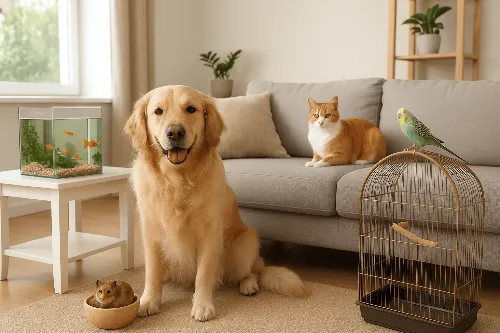
Needleheal Acupuncture: Ancient Wisdom with Modern Healing Power
Health
Moving Companies | Search ads

Emergency Generator | Search ads

Pet Training | Search ads
Bringing an animal into your household is a big step — and if you’re feeling unsure about which type of pet to choose, you’re in good company. Pets can quickly become cherished members of the family, but they also come with real responsibilities. With options ranging from playful pups and cuddly cats to reptiles and rodents, it can be hard to know which companion suits your lifestyle best. This comprehensive guide is here to help you navigate that decision and discover the ideal pet match for your home and routine.
Welcoming a pet into your life is a commitment — one that comes with joy, care duties, and emotional bonds. Here are some key considerations to help you make a thoughtful and informed choice:
Start by assessing your schedule and energy levels. Some animals need frequent interaction and physical activity, while others are more low-maintenance. If you’re often out or work long hours, a more independent pet may suit you better than one that needs constant engagement.
Once you have a type of pet in mind, dive into research. Understand the breed or species, common health concerns, and personality traits. Knowing what to expect helps ensure you’re ready to meet their needs long-term.
Rescue organizations and shelters are full of wonderful animals looking for loving homes. Adoption can be a rewarding way to find your new companion, but keep in mind that rescued pets may need time and patience as they adjust.
If you live with others, ensure the entire household is prepared to welcome a pet. From feeding duties to walking schedules, everyone should be on the same page before you bring an animal into your home.
Owning a pet isn’t a short-term decision. It’s important to plan for years of companionship, including vet visits, training, and emotional support. Make sure your home and lifestyle can accommodate this long-term responsibility.

Moving Companies | Search ads

Emergency Generator | Search ads

Pet Training | Search ads
The size of your pet can affect everything from your living arrangement to your daily routine. Let’s look at a few general categories to help narrow things down:
Ideal for compact spaces or people with limited free time, animals like hamsters, mice, or fish require minimal space and care. They’re great starter pets, especially for children or first-time owners.
Cats, rabbits, or guinea pigs fall into this group. They often need a bit more room and attention but are manageable for most homes. Many of them thrive indoors and enjoy human interaction without demanding constant supervision.
Dogs and even horses (for those with the space!) need a lot more attention, exercise, and training. If you have a yard and an active lifestyle, a larger pet might be perfect — just be ready for the added responsibility.
Reptiles, parrots, or amphibians might be less traditional, but they can be fascinating companions. However, they often come with specialized care needs, such as controlled temperatures, custom diets, and unique habitats.
Before your new companion arrives, you’ll want to ensure your living environment is safe and welcoming:
Pick a secure, comfortable area for your pet. This might be a cozy corner for a dog bed or a spot for an aquarium or cage. Keep the space free of hazards and provide access to natural light when possible.
Have everything ready before your pet comes home — food, water dishes, toys, bedding, grooming tools, and any species-specific items.
Whether it’s basic obedience or litter habits, starting training early will make things smoother for everyone involved. Consistency and patience are key.
Unexpected vet bills can be expensive. Consider a pet insurance plan to help cover health emergencies or routine check-ups. It can save you money and stress in the long run.
Q: How do I know which pet is best for me?
A: Start by evaluating your lifestyle, daily schedule, and budget. Think about how much interaction you can realistically offer and what level of care you’re comfortable providing.
Q: What’s the lowest-maintenance pet?
A: Fish are among the easiest animals to care for. With proper setup and routine cleaning, they require minimal attention — just be sure to choose species appropriate for your tank and experience level.
Q: How can I pick a pet that fits my family?
A: Consider the energy levels, age, and personalities of family members. Discuss preferences and responsibilities together, and choose an animal that complements your collective lifestyle.
Choosing a pet is a rewarding experience, but it comes with important decisions. From the size of your new companion to the environment you create for them, every step counts. By planning ahead and learning what to expect, you’ll give your future pet the best chance at a happy, healthy life — and you’ll gain a loyal friend in return.
Ready to start the journey? Take your time, do your research, and open your heart — the perfect pet might be waiting just around the corner.